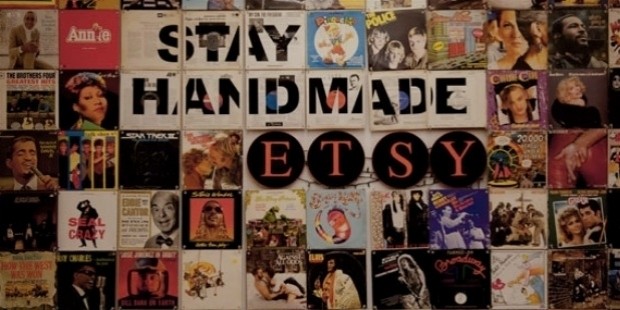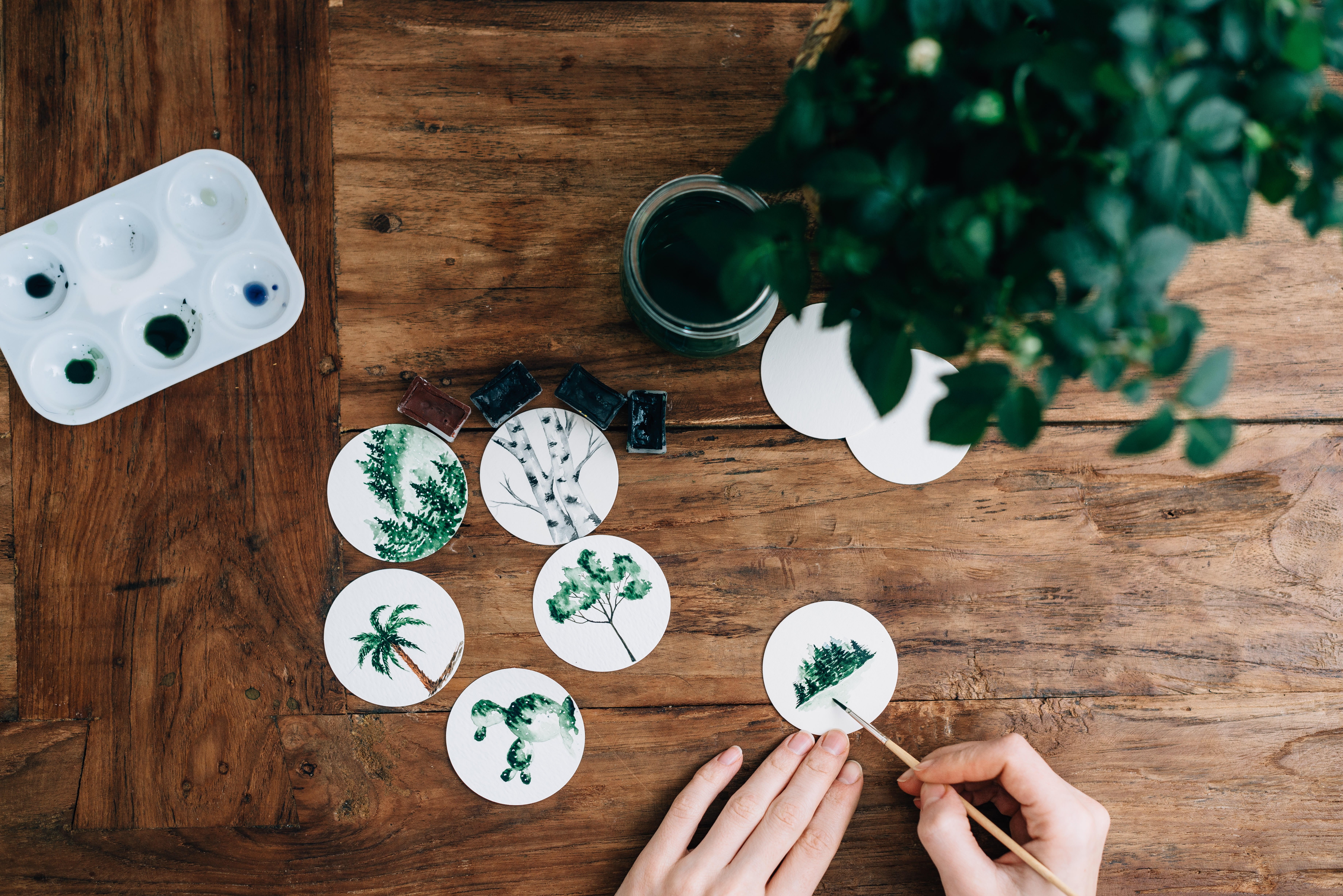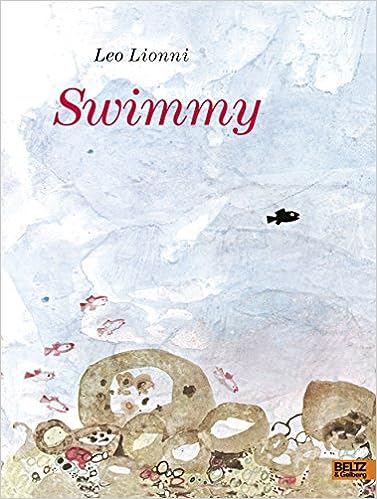A brand with a sense of wonder, a sense of poetry, and a sense of foolishness.
Rob Kalin likes making things.
He makes his own his own wooden furniture, has built his own cob oven to bake his own bread and sews his own underwear. He also manufactures high-end horn speakers, and colours self-made unisex tunics with a home-made carmine dye.

Perhaps most famously though he made himself a millionaire.
He was also a co-founder of Etsy.
His original dream was to be a photographer and so left home at 16 and moved from Brooklyn to Boston and into an artist’s squat. Once he had graduated from high school, he went on to attend five different colleges and in 2004 received his Bachelor of Arts degree.
To pay his way, he worked in numerous small-time, often menial jobs but which he views positively as learning experiences. “I worked many jobs: a cashier at a Marshalls department store, stock boy at a camera shop, freelance carpenter, lowest rung on the ladder at a demolition company, minimum wage floor help at the Strand bookstore and as an amanuensis for an eighty-year-old philosopher from Vienna. All of these jobs prepared me for being an entrepreneur and starting a company,” as he wrote on Etsy’s blog.
Then in early 2005, Rob and two friends, Haim Schoppik and Chris Maguire agreed to work on a design project for getcrafty.com, an online bulletin board for crafters. It made Kalin realise that many ‘makers’ were looking for a place to sell their products. They disliked eBay but didn’t have anywhere else to go. He himself wanted to sell his handcrafted furniture online.
Working out of Kalin’s Brooklyn apartment, the trio designed and coded a modest e-commerce website in 10 weeks. Etsy went online in June 2005.
Many sellers registered immediately and started spreading the word to other crafters and putting up information in online forums.

Rob’s approach was innovative.
Firstly, where others might have counted the number of users, looked at rates of growth or turnover as the most important KPI, Kalin and the team regarded “real conversations ” as the most important KPI. They wanted buyers and sellers to talk about what they made and how they made it – communicating about materials, the crafting process, the story behind the goods.
One of Rob’s early investors put it “Rob’s idea was idealistic, almost anti-commercial.”
Another innovation was the fee structure which Etsy split into two: a small basic fee to get listed and upload products and a transaction fee but only upon each purchase.
Rob and his co-founders also focused on the seller’s needs, constantly adding new tools to the site to help them gain exposure.
By January 2008, Etsy had 650,000 users in 127 different countries. Much was obviously going the right way, but Rob was worried he was making a mess of things when it came to managing the business. So, in June 2008, he demoted himself to Chief Creative Officer, and Etsy’s former COO Maria Thomas became the new CEO.

By late 2009, the brand had doubled gross merchandise value (GMV) and reached profitability.
However, all was not well. There were continual complaints from sellers regarding customer support and the site’s performance. Rob felt that the company had lost its way and, in pursuit of all that growth, was losing sight of its core values. He returned to his role as CEO and in a statement to employees said;” I’m here to restore a sense of wonder, a sense of poetry, and a sense of foolishness to Etsy.”
Putting together some of his quotes, it’s clear he wanted to (re-) establish “a global community of like-minded people”, build “a worldwide platform for creatives from Peru, Tanzania or the Black Forest” who enjoy “the magic of making things.”
He doubled the staff and added new features — including a social media function similar to those of Facebook — as a means of ensuring Etsy continued to move beyond commerce. He explained his thinking “On Facebook, you’re not going to connect with people who have different religious views, different political views, different tastes. Etsy adds a whole other layer on top of that: if a person who has different religious or political views is making me a custom sweater, I’m going to have this long conversation that I would have never had. To me, that’s a beautiful thing.”
He also wanted to “help keep commerce human”, so while many of the world’s biggest third generation companies like Facebook, Shopify, or Google rely on various messenger applications and bots for their real-time customer communication. Etsy under Kalin still preferred the human touch and real conversation.
Kalin and the board continued to have differences about balancing doing well and doing good, and in the summer of 2011, he left Etsy. Chad Dickerson who had been hired by Rob as Etsy’s CTO three years earlier took over as CEO.
As of 31 December 2021, Etsy had over 120 million items in its marketplace, and the online marketplace for handmade and vintage goods connected 7.5 million sellers with 96.3 million buyers. Etsy had total sales, or Gross Merchandise Sales (GMS), of US$13.5 billion on the platform and revenue of US$2.3 billion, and registered a net income of US$493.5 million.
Rob now owns and works from a former mill in Catskill, New York with a small community of artisans. He’s doing what he likes best – making things. As Fred Wilson an early investor once said Kalin was “more of an artist than an entrepreneur,” and as Kalin himself said trying to maximize shareholder value was ”ridiculous”.
And the moral of the story is balancing doing well and doing good isn’t easy, and in the drive for growth it can be easy to lose sight of both the original vision and the brand’s principles.

Written by Leo Lionni, Swimmy tells the tale of a school of smaller fish who find strength and power in their numbers. Kalin recorded himself reading the book aloud and posted the video on Etsy’s blog, writing, “We do not want Etsy itself to be a big tuna fish. Those tuna are the big companies that all us small businesses are teaming up against.” – yet in the end that is what Etsy has become, a big fish.